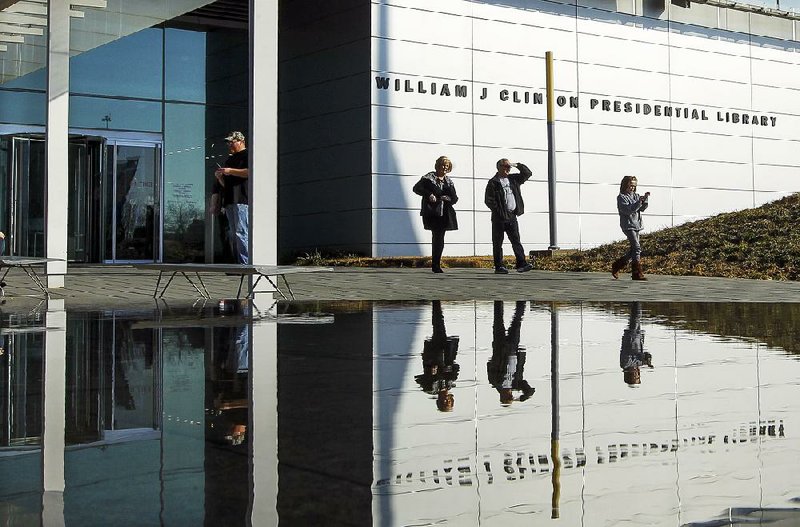Arkansas' traditional travel markets such as Little Rock and Hot Springs continue to pull in the most tourism dollars for the state, but the state Department of Parks and Tourism is starting to target areas that have more potential for growth.
Travel expenditures grew about 8.6 percent in 2015 to about $28 million, according to the department's annual report released last week. Visitors spent an estimated $258.92 per trip, resulting in more than $7.2 billion in total travel expenditures. That includes $374 million in state taxes and $137 million in local taxes.
The top counties in the report for 2015 tourism dollars were Pulaski County and Garland County.
The department breaks down the state into larger regions. The "heart of Arkansas" in the middle of the state pulled in more than $2 million, and Northwest Arkansas pulled in more than $1 million. Northwest Arkansas grew the most, about 11 percent in travel expenditures during 2015.
The Northwest Arkansas region is starting to attract millennial travelers, a group that all tourism markets are trying to capture as millennials become more economically powerful, said Joe David Rice, tourism director at the department.
"Millennials love the kind of locally owned restaurants they have, and they like being able to check out the skills of the brewmeisters out there," he said.
With more than 100 miles of trails in the region, cycling has become an attraction in Northwest Arkansas, said Kalene Griffith, president of Visit Bentonville.
"We're in the beginning phases of creating a niche market for cycling," she said. "We can continue to grow on that market nationally."
Bentonville and the Northwest Arkansas region pull in high numbers of business travelers compared with the rest of the state.
"Of course we're going to continue to have the Wal-Mart business traveler," Griffith said. "They have to come for one or two days on a regular basis, not every city gets that."
Motorcycle travel is another niche market that the Department of Parks and Tourism is trying to promote throughout the state, Rice said. Scenic highways, the state's location as it relates to nearby big metro locations and the state's lack of helmet laws drives motorcyclists to explore the state.
"These are not the motorcyclists my mama warned me about as a kid," he said. "They are doctors and lawyers who are going to stay in hotels and eat at restaurants and make a pretty big contribution to the state."
Regions that touch other states are also an area of focus for the department. Only about 5 percent of visitors to Arkansas arrive by plane. Of visitors that stopped in welcome centers, most were from Texas, Missouri, Louisiana and Oklahoma.
The Arkansas Delta Byways, an area spanning the entire eastern border of the state, saw travel expenditures grow about 7 percent in 2015. Johnny Cash's boyhood home in Dyess, about a 45-minute drive from Memphis, is a growing draw for the region. Helena, on the Mississippi River, attracts Civil War history buffs and others looking to explore the delta region.
Rice said it's difficult to explain to visitors why dry counties continue to dot the state.
"Today's travelers are a pretty sophisticated, worldly bunch," he said. "Sometimes there's just people who would enjoy a nice glass of wine with their dinner."
Rice said the department relies on Arkansas' natural beauty and friendly residents, something that comes up frequently when people are surveyed leaving the state, to compensate for Arkansas' relative lack of attractions compared to other states.
"One of our really big challenges is just keeping up with the Joneses," he said. "Someone's always going to have a bigger outlet mall, a taller roller coaster or a bigger theme park."
The Arkansas travel industry employed 64,679 people and paid about $1.3 billion in wages and salaries in 2015, the report said.
About 40 percent of the people stopping at the state's welcome centers said they were visiting friends or relatives, followed by 16 percent who were sightseeing and 11 percent traveling to Arkansas for business. About 19 percent of people visiting the state went sightseeing, and 13 percent traveled to historic sites.
"Arkansas tourism is not the fun and games department," Rice said. "It's really economic development."
SundayMonday Business on 03/27/2016


